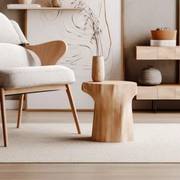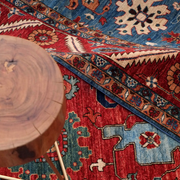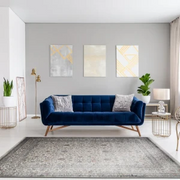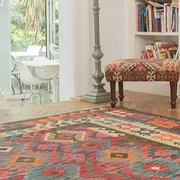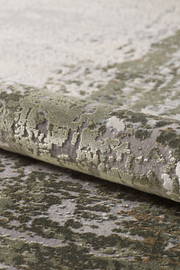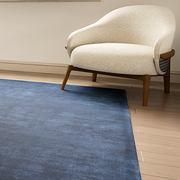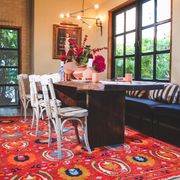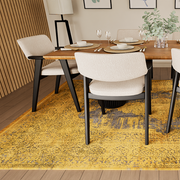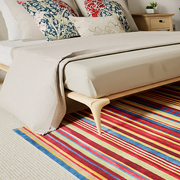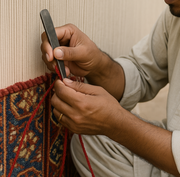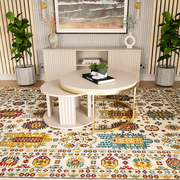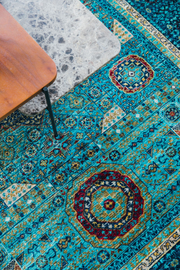A Guide to UNIQUE ORIENTAL RUGS
Our unique oriental rugs are meticulously crafted in Afghanistan, where skilled artisans use time-honored techniques to create each piece with incredible detail and precision. Once the initial craftsmanship is completed, the rugs are carefully finished in Pakistan, where expert finishers ensure they meet the highest standards of quality and durability. This fusion of Afghan craftsmanship and Pakistani finishing creates rugs that are both visually stunning and of exceptional quality—offering the perfect balance of tradition, artistry, and durability for your home.
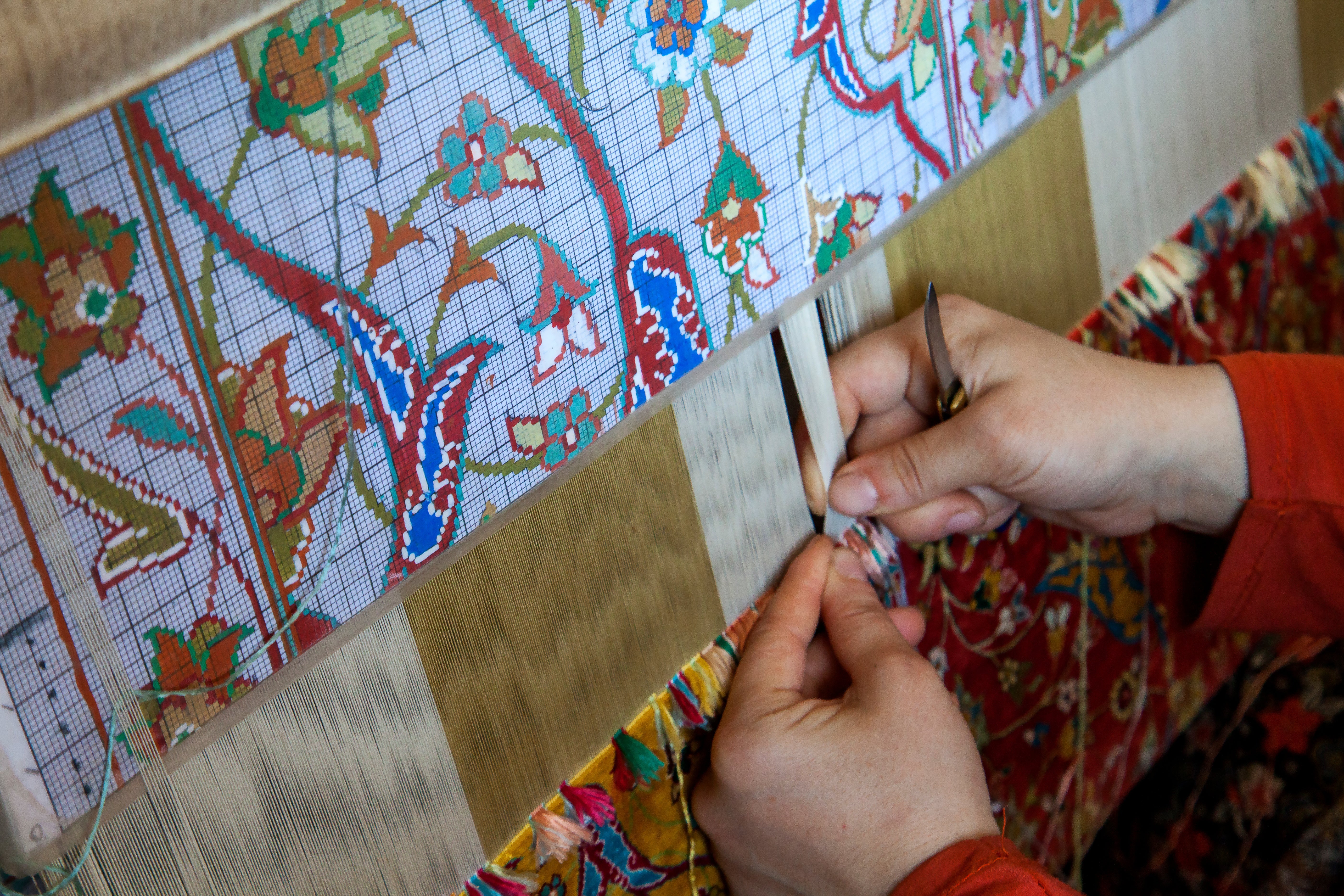
Design & Planning
The process begins with the design phase, where intricate patterns are drawn, often inspired by cultural symbols, nature, or historical motifs. These designs are then translated into a grid on paper, serving as a guide for the artisans as they begin knotting. The warp is the foundation of the rug, made from durable materials like cotton or wool. The warp threads are stretched tightly across a loom, forming the base onto which the knots will be tied.
In Afghanistan, wool for rugs is typically sourced from local sheep, which are raised primarily in rural areas. The wool used for Afghan rugs comes from several types of sheep breeds, with the most notable being the Karakul sheep, known for its fine wool and distinctive pelts.

Sourcing of the wool
Here's a general process of how wool is sourced for Afghan rugs:
Shearing the Sheep: Wool is gathered through shearing the sheep, usually done once a year, typically in the spring or early summer, to avoid colder weather. The sheep are raised in regions with varying climates, and their wool reflects the conditions of these areas.
Wool Sorting: After the wool is sheared, it is sorted based on quality. The wool is separated into different grades, with the finest wool coming from the underbelly and softer parts of the sheep. This high-quality wool is used for weaving finer, more intricate rugs, while coarser wool may be used for rugs with thicker textures or lower quality.
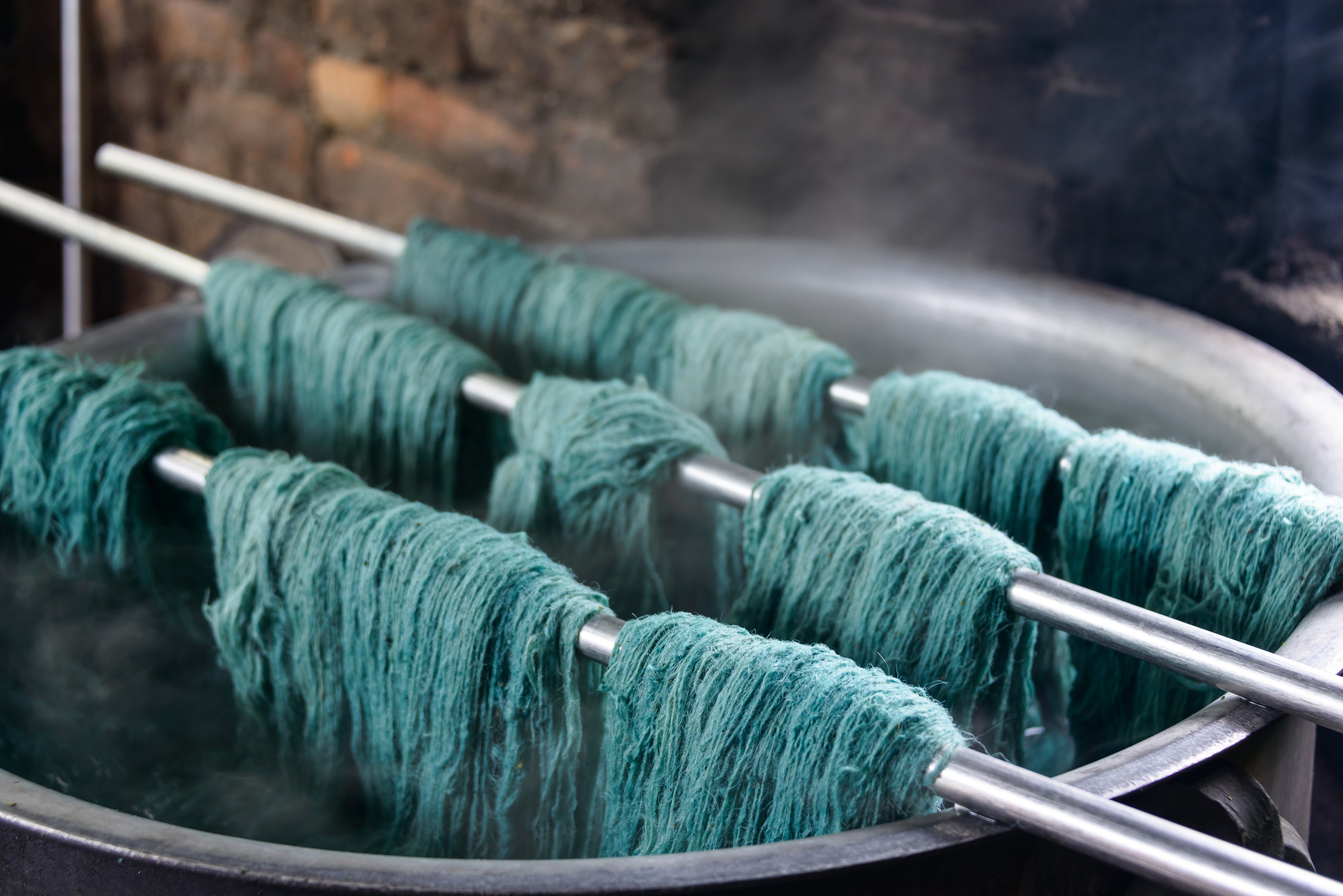
Spinning & Dyeing the wool
The wool used in Afghan rugs is carefully spun by hand. Once spun, the wool is dyed using natural dyes, often derived from plants, insects, and minerals. The colors used are rich and vibrant, with each dye being applied in layers to achieve the desired shade.
Carding and Spinning: After cleaning, the wool is carded, which involves untangling and aligning the fibers to prepare them for spinning. In Afghanistan, spinning is often done by hand, using a traditional spinning wheel to create yarn.
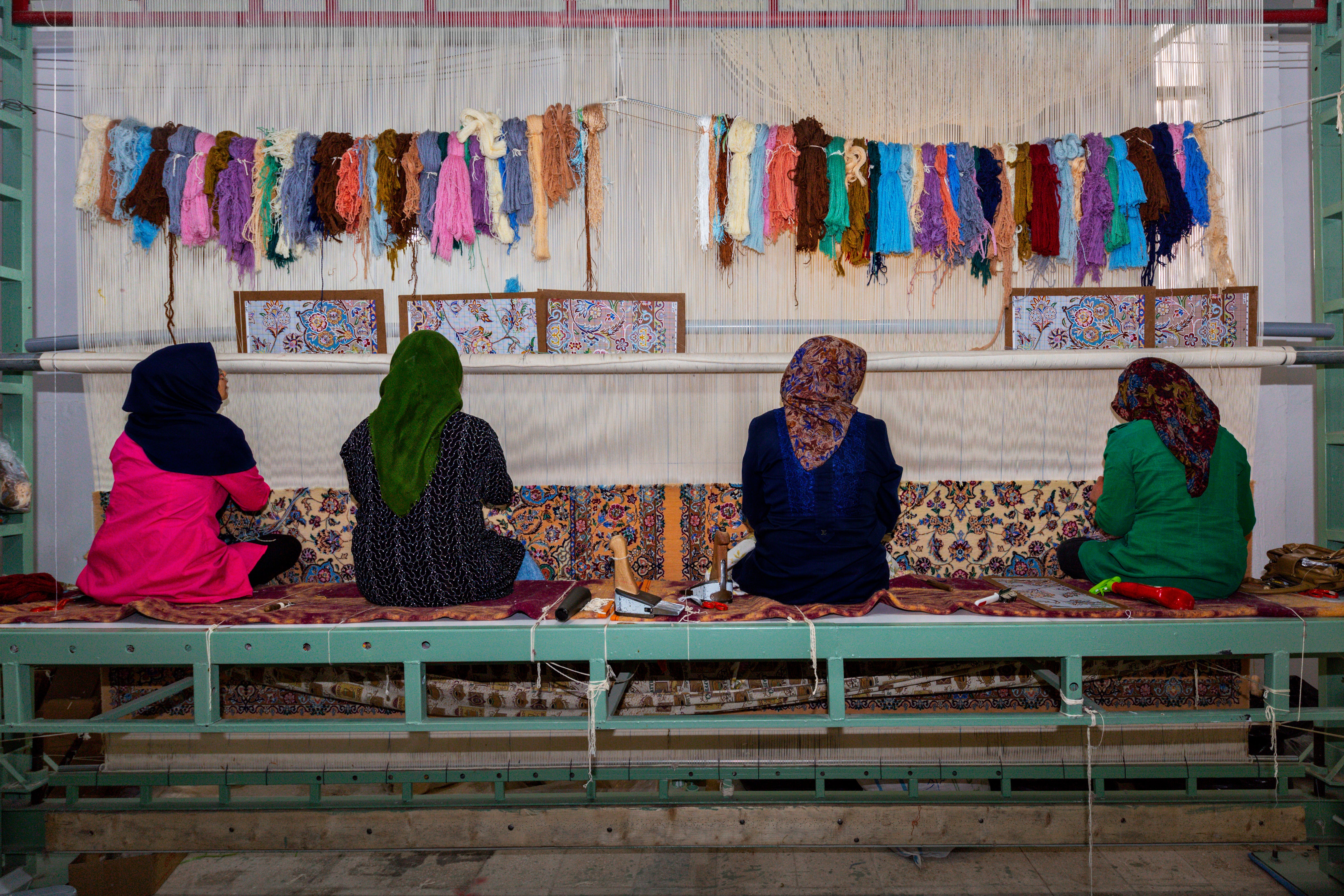
Tying the knots
Skilled artisans tie each knot by hand using the dyed wool. The most common knot used in Afghan rugs is the Persian knot, where the wool is looped around two warp threads and then secured in place. Depending on the tightness and number of knots per square inch, the rug can vary in texture and durability. This step is highly detailed, with each knot being placed according to the design
Please see below a video showing them mixing to make the colours. The process continues after these videos.
The entire process can take months, depending on the size and complexity of the rug. The result is a one-of-a-kind hand-knotted piece that reflects the rich cultural heritage and craftsmanship of Afghanistan.
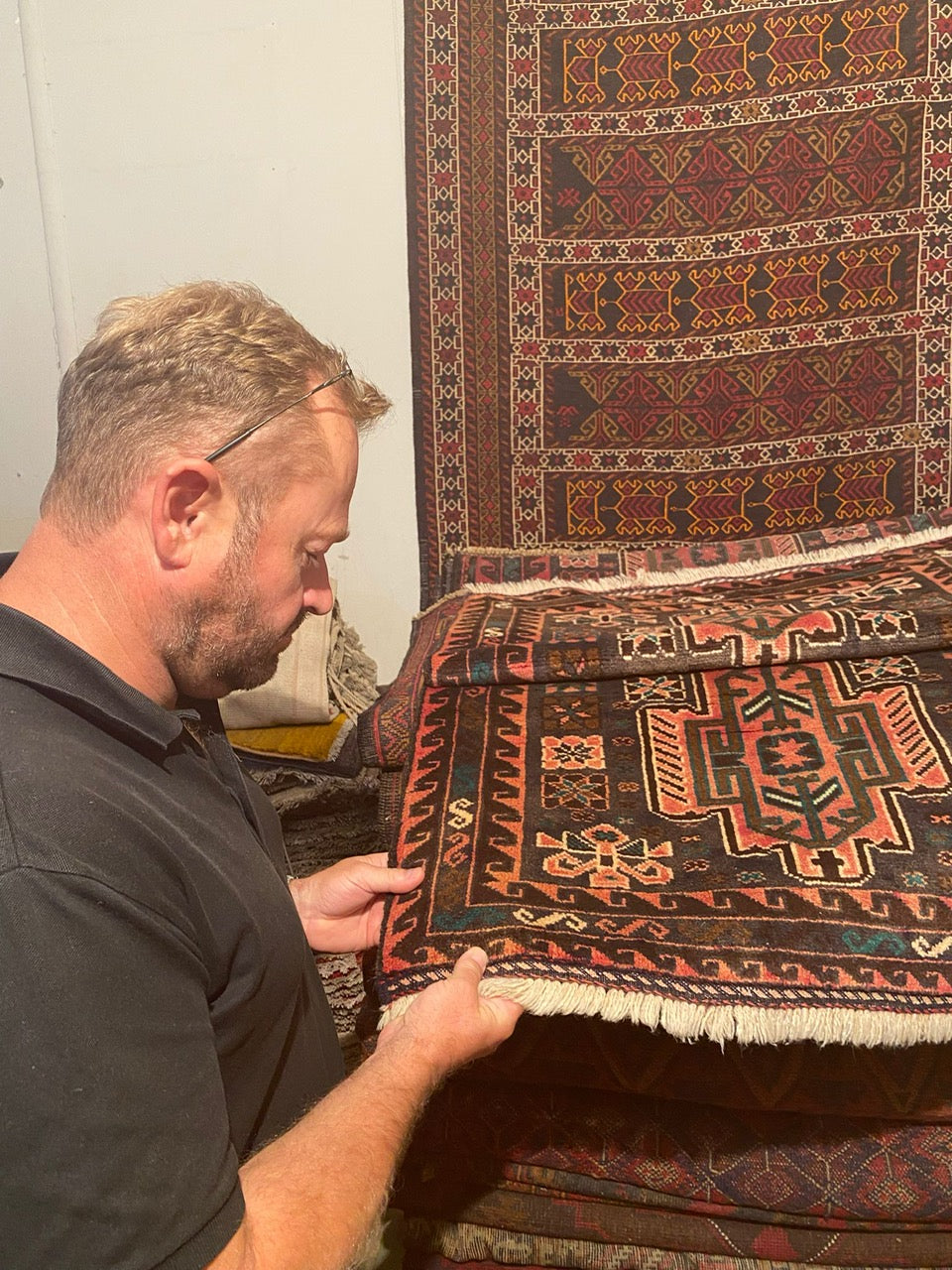
The extra mile
At Gooch, we personally select each rug to ensure that every piece meets our high standards of authenticity and quality. Jonathan Gooch travels directly to the regions where these rugs are crafted, carefully handpicking each one to ensure it reflects the rich cultural heritage and exceptional craftsmanship we value. By being involved in every step of the selection process, we guarantee that only the finest, most authentic rugs make it to our collection. This hands-on approach allows us to maintain the integrity of the designs, materials, and techniques used, ensuring that every rug we offer is of the highest quality and truly one-of-a-kind.
The Journey to Gooch
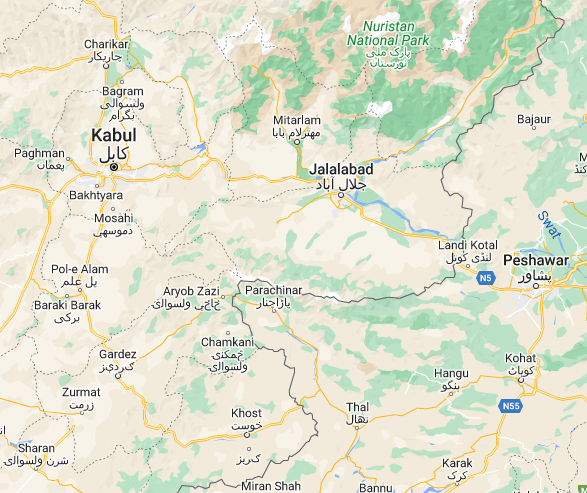
Kabul, Afghanistan
Kabul is the capital and largest city of Afghanistan, located in the eastern part of the country. It is situated in a narrow valley along the Kabul River, surrounded by the rugged Hindu Kush mountain range. Rugs made in Kabul often feature elegant, intricate designs and are known for their high knot density, resulting in fine, detailed patterns. Both Sultani and Kazak rugs are made in this regions, with spectacular craftsmanship, rich textures, and intricate, colorful designs, making them highly sought after by collectors and interior designers alike.
Journey time from Kabul to the Peshawar border would take 5-7 days.
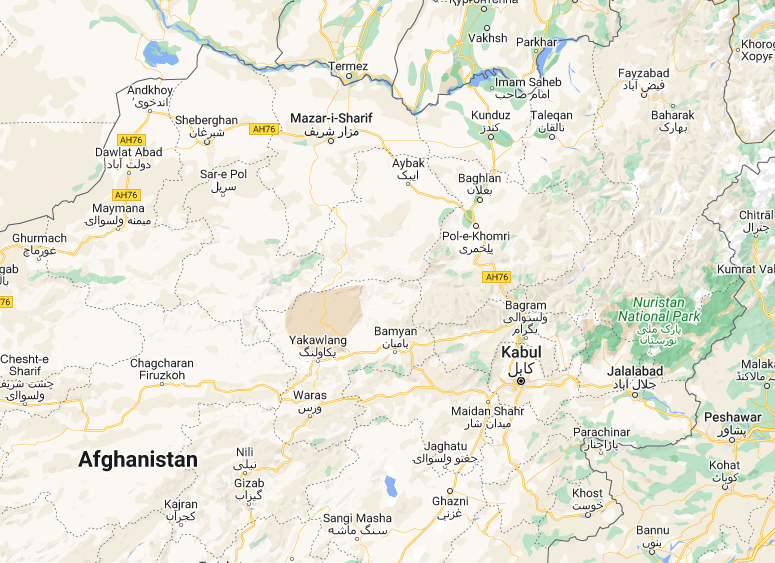
Mazar-I-Sharif, Afghanistan
Mazar-i-Sharif is located in northern Afghanistan, in the region of Balkh. It is one of the country's largest cities and serves as a cultural and economic hub for the northern provinces.Rugs from Mazar-i-Sharif are highly regarded for their aesthetic beauty, craftsmanship, and the cultural significance they carry, making them a prized addition to any collection. While the region produces a variety of different types of rugs, Kundos, Khal Mohammadi, and Kelims designs can often be found in Mazar-i-Sharif. These rugs frequently feature diamond-shaped patterns, stylized flowers, and traditional tribal motifs.
Journey time from Mazar-i-Sharif to the Peshawar border would take 7-10 days.
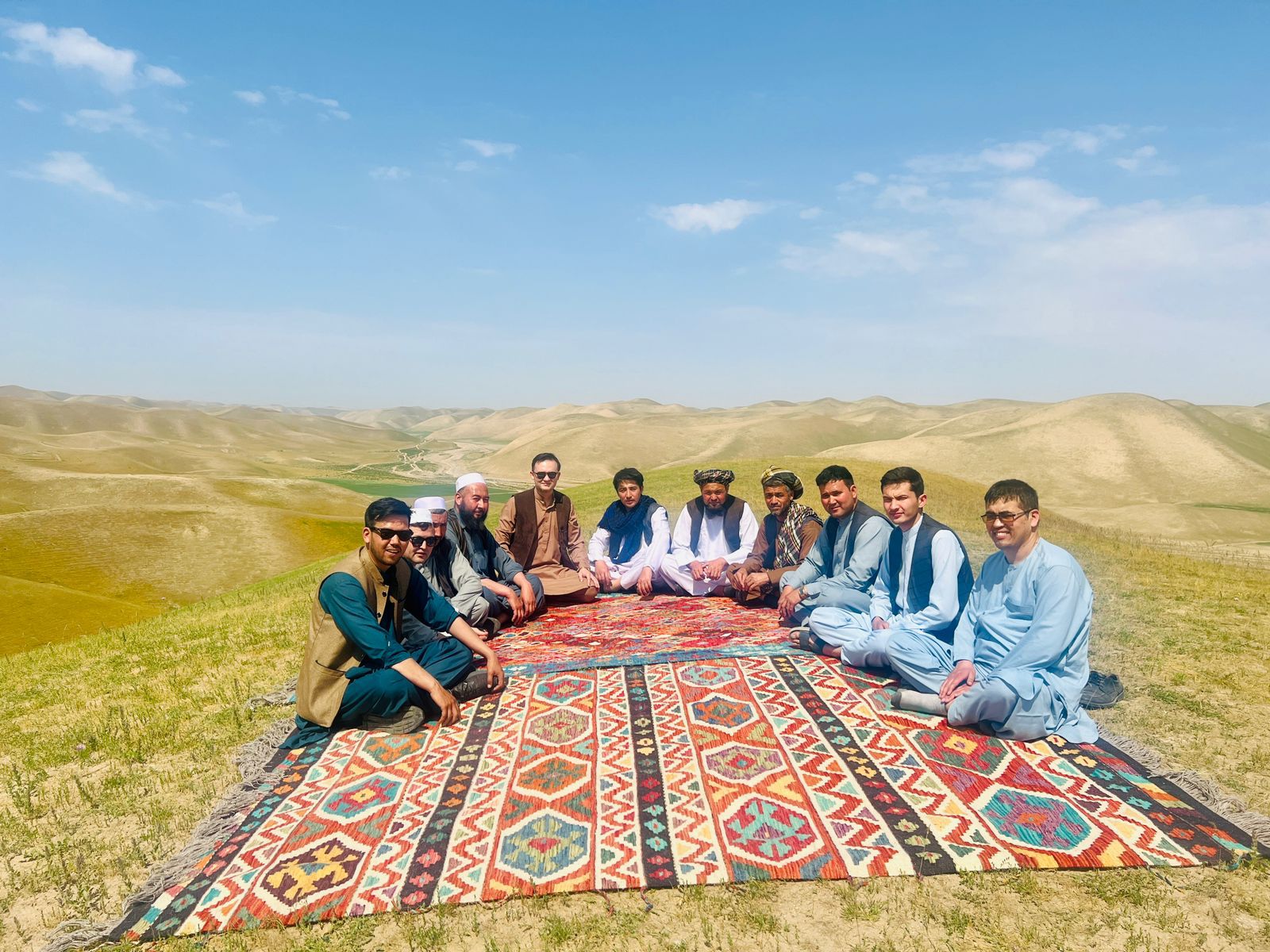
Lahore, Pakistan
Journey time from Peshawar border to Lahore, Pakistan takes 1-2 days. The finishing process for hand-knotted rugs typically takes 2-4 weeks and includes essential steps such as shearing, stretching, fringe work, binding, and a thorough final quality inspection.Journey time from Lahore to UK, then onto Gooch takes 6-8 weeks.


